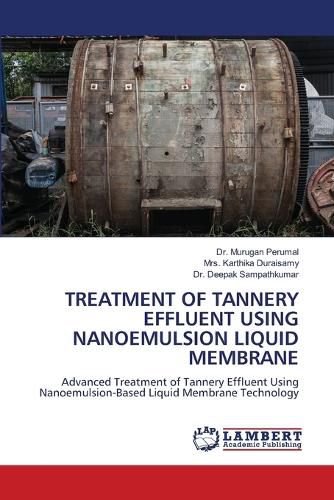Readings Newsletter
Become a Readings Member to make your shopping experience even easier.
Sign in or sign up for free!
You’re not far away from qualifying for FREE standard shipping within Australia
You’ve qualified for FREE standard shipping within Australia
The cart is loading…






The extraction of heavy metal ions in tannery effluent by nanoemulsion liquid membranes (NELMs) was studied. The liquid membrane phase of the NELM consisted of Aliquat336 as carrier, Span 80 as surfactant, neem oil as diluent, graphene & ZnO as stablising agent and sodium hydroxide solution as internal phase. The sample and extracted membrane phase was characterized using Fourier transform infrared spectroscopy (FTIR), X-ray diffraction (XRD), scanning electron microscope (SEM) and Raman Spectroscopy. Optimization for several parameters such as pH, carrier concentration, surfactant concentration, agitation speed, initial feed concentration, Extraction time, stripping ratio and M/S ratio was done and the highest extraction of heavy metals was analysed.
$9.00 standard shipping within Australia
FREE standard shipping within Australia for orders over $100.00
Express & International shipping calculated at checkout
The extraction of heavy metal ions in tannery effluent by nanoemulsion liquid membranes (NELMs) was studied. The liquid membrane phase of the NELM consisted of Aliquat336 as carrier, Span 80 as surfactant, neem oil as diluent, graphene & ZnO as stablising agent and sodium hydroxide solution as internal phase. The sample and extracted membrane phase was characterized using Fourier transform infrared spectroscopy (FTIR), X-ray diffraction (XRD), scanning electron microscope (SEM) and Raman Spectroscopy. Optimization for several parameters such as pH, carrier concentration, surfactant concentration, agitation speed, initial feed concentration, Extraction time, stripping ratio and M/S ratio was done and the highest extraction of heavy metals was analysed.